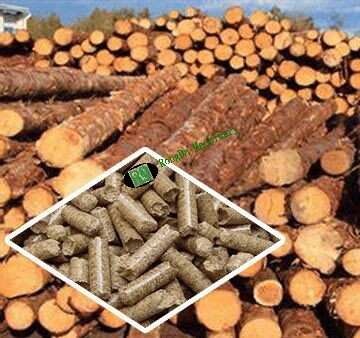Welcome to Rongda Machinery Co., Ltd
Toggle Navigation
The renewable energy revolution has created unprecedented opportunities for forward-thinking entrepreneurs. Among the most promising ventures is biomass pellet manufacturing—a business that transforms organic waste into valuable fuel while addressing environmental challenges. This comprehensive blueprint will guide you through establishing a successful biomass pellet enterprise from conception to market dominance.
The biomass pellet industry represents a convergence of environmental responsibility and economic opportunity. These compact fuel sources, created by compressing agricultural byproducts, forestry residues, and organic waste materials, serve diverse energy applications across residential, commercial, and industrial sectors.

Environmental Legislation: Stringent carbon reduction policies worldwide are driving demand for clean energy alternatives, positioning biomass pellets as a crucial component of national energy strategies.
Economic Advantages: The production model capitalizes on low-cost waste materials, transforming them into premium energy products with attractive profit margins—particularly in markets with established renewable energy infrastructure.
Circular Economy Integration: By converting waste streams into valuable resources, biomass pellet operations support sustainable economic models while strengthening local agricultural and forestry sectors.
Policy Support: Governments actively incentivize renewable energy ventures through grants, tax credits, and preferential financing programs, significantly reducing initial investment barriers.
Success begins with comprehensive market understanding. Your research should encompass demand patterns across different customer segments—from homeowners seeking heating solutions to industrial facilities requiring large-scale energy sources. Analyze pricing dynamics both locally and internationally to identify optimal positioning strategies.
Regulatory compliance research is equally critical. Environmental standards, safety protocols, and licensing requirements vary significantly by jurisdiction. Understanding these parameters early prevents costly delays and ensures smooth operational launches.
Raw material availability assessment forms another cornerstone of market research. Evaluate local sources of wood waste, agricultural residues, and other biomass feedstocks to ensure consistent supply chains and competitive input costs.
A robust business framework serves as your operational roadmap. Begin with a compelling executive summary that articulates your mission and strategic objectives. Follow with detailed market analysis covering industry trends, competitor positioning, and customer segmentation.
Define your product portfolio clearly—whether focusing on premium wood pellets, agricultural waste pellets, or diversified biomass offerings. Each category requires specific processing techniques and targets different market segments.
Develop comprehensive financial projections including equipment costs, facility expenses, working capital requirements, and revenue forecasts. These projections form the foundation for investor presentations and financing applications.
Facility location significantly impacts operational efficiency and profitability. Prioritize proximity to raw material sources such as sawmills, agricultural processing facilities, or forestry operations. Transportation infrastructure access is equally important for efficient distribution to end markets.
Consider utility availability, particularly power supply requirements for energy-intensive pelletizing equipment. Many successful operations integrate renewable energy sources to reduce operational costs and enhance sustainability credentials.
Modern biomass pellet manufacturing requires sophisticated equipment systems working in harmony. Size reduction equipment, including chippers and hammer mills, prepares raw materials for processing. The pellet mill itself represents the core technology, compressing prepared biomass into uniform pellets under high pressure and temperature.
Post-production systems including cooling, screening, and packaging equipment ensure product quality and market readiness. Consider automated handling systems to reduce labor costs and improve operational efficiency.
Power requirements for full-scale operations are substantial. Evaluate options for renewable energy integration, potentially including biomass-fired boilers that utilize production waste streams.
Establishing reliable raw material sources forms the backbone of successful operations. Develop relationships with multiple suppliers to ensure consistent feedstock availability and competitive pricing. Consider vertical integration opportunities such as waste collection services or agricultural partnerships.
Quality control protocols for incoming materials are essential. Moisture content, particle size, and contamination levels directly impact final product quality and production efficiency.
Capital requirements vary significantly based on production scale and automation levels. Small-scale operations may require modest investments, while industrial-scale facilities demand substantial capital commitments for equipment, facilities, and working capital.
Traditional bank financing remains accessible for businesses with strong plans and experienced management teams. Angel investors and venture capital firms increasingly target renewable energy ventures, particularly those with clear environmental benefits and strong market potential.
Government funding programs specifically supporting renewable energy initiatives offer attractive financing terms and may include grants that reduce overall capital requirements.
Pricing strategies should reflect market positioning while ensuring healthy margins. Premium positioning may be justified through quality certifications, sustainability credentials, or specialized product characteristics.
Long-term supply contracts with major customers provide revenue stability and improve financing attractiveness. Industrial customers particularly value reliable suppliers with consistent quality and delivery performance.
Export opportunities can significantly expand market reach, though they require understanding of international quality standards and logistics requirements.
Successful market entry requires multi-channel distribution strategies. Direct sales to large industrial customers often provide the highest margins and most stable relationships. Wholesale distribution through energy retailers extends market reach while reducing sales complexity.
Digital marketing increasingly drives customer acquisition, particularly in residential markets. Professional websites showcasing environmental benefits and cost savings resonate with eco-conscious consumers.
Industry trade shows and renewable energy conferences provide valuable networking opportunities and direct access to potential customers and partners.
Product quality consistency builds reputation and enables premium pricing. Implement comprehensive quality control systems covering raw materials, production processes, and finished products.
Sustainability certifications and environmental standards compliance enhance brand credibility and may be required for certain market segments. Consider pursuing recognized certifications that differentiate your products in competitive markets.
Continuous improvement drives long-term success. Monitor key performance indicators including production efficiency, quality metrics, and customer satisfaction levels. Regular equipment maintenance prevents costly downtime and ensures consistent output quality.
Energy efficiency optimization reduces operational costs and strengthens environmental positioning. Many successful operations achieve significant cost savings through waste heat recovery and process optimization.
Successful operations often expand through increased capacity, geographic expansion, or product line diversification. Plan expansion strategies that leverage existing capabilities while accessing new market opportunities.
Strategic partnerships can accelerate growth through shared resources, expanded distribution networks, or technology development initiatives.

Biomass pellet manufacturing represents more than a business opportunity—it's a chance to contribute meaningfully to environmental sustainability while building a profitable enterprise. The industry's growth trajectory, supported by environmental policies and market demand, creates favorable conditions for well-planned ventures.
Success requires careful attention to market dynamics, operational excellence, and strategic positioning. By following this comprehensive blueprint and adapting strategies to local conditions, entrepreneurs can build thriving businesses that serve both profit and environmental objectives.
The renewable energy transformation presents a limited window for establishing market position. Those who act decisively with solid planning and adequate resources will capture the greatest opportunities in this expanding industry.